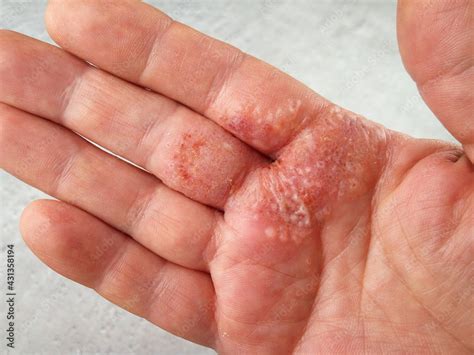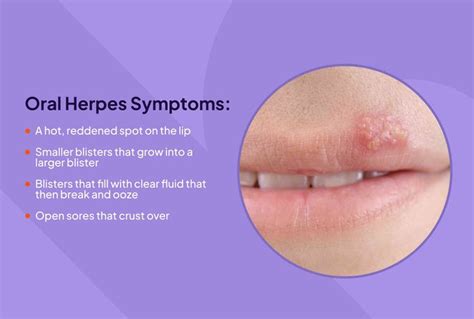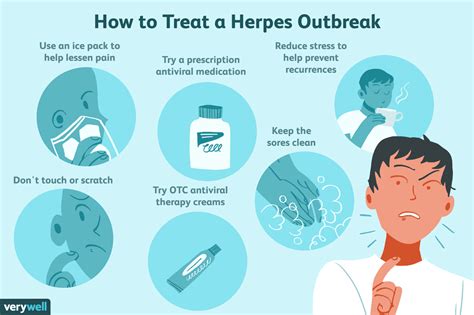Intro
Discover 5 ways to manage herpes on hand, including symptoms, treatment, and prevention methods, to help alleviate hand herpes outbreaks and reduce transmission risk of herpes simplex virus.
Herpes on the hand, also known as herpetic whitlow, is a rare but potentially painful and contagious condition. It is caused by the herpes simplex virus (HSV), which can enter the body through small cuts or cracks in the skin. Understanding the causes, symptoms, and treatments of herpes on the hand is crucial for managing the condition effectively. In this article, we will delve into the world of herpetic whitlow, exploring its symptoms, transmission, diagnosis, treatment options, and prevention strategies.
Herpes on the hand can affect anyone, regardless of age or health status. However, certain individuals are more susceptible to contracting the virus, including healthcare workers, daycare staff, and parents of young children. The virus can spread through direct contact with an infected person's saliva, mucus, or skin lesions. This highlights the importance of practicing good hygiene, such as washing hands frequently, to prevent the transmission of the virus.
The symptoms of herpes on the hand can vary from person to person but often include redness, swelling, and pain in the affected area. In some cases, small, fluid-filled blisters may appear, which can rupture and crust over. These symptoms can be accompanied by fever, swollen lymph nodes, and a general feeling of being unwell. If you suspect you have contracted herpes on the hand, it is essential to seek medical attention promptly to prevent complications and promote healing.
Causes and Risk Factors of Herpes on Hand

The causes of herpes on the hand are primarily related to the herpes simplex virus. There are two types of HSV: HSV-1, which is commonly associated with oral herpes (cold sores), and HSV-2, which is more commonly linked to genital herpes. However, both types can cause herpetic whitlow. The risk factors for developing herpes on the hand include having a weakened immune system, engaging in activities that involve close contact with others (such as sports or healthcare work), and failing to practice good hygiene.
Understanding HSV-1 and HSV-2
Both HSV-1 and HSV-2 can lead to herpetic whitlow, although the primary source of infection is usually HSV-1. The virus can be transmitted through skin-to-skin contact with someone who has an active lesion or through contact with contaminated objects. Understanding the difference between HSV-1 and HSV-2 and how they are transmitted can help in preventing the spread of the virus.Symptoms of Herpes on Hand

The symptoms of herpes on the hand can be quite distressing and may include:
- Redness and swelling of the affected area
- Pain or tenderness, which can be severe
- Small, fluid-filled blisters that may rupture and crust over
- Fever
- Swollen lymph nodes
- A general feeling of being unwell
These symptoms can appear anywhere on the hand but most commonly affect the fingers. The onset of symptoms usually occurs within 2-12 days after exposure to the virus.
Diagnosing Herpes on Hand
Diagnosing herpes on the hand typically involves a physical examination and a review of the patient's medical history. A healthcare provider may also perform a viral culture or PCR (polymerase chain reaction) test to confirm the presence of the herpes simplex virus. Early diagnosis is crucial for effective treatment and to prevent complications.Treatment Options for Herpes on Hand

The treatment for herpes on the hand usually involves antiviral medications, which can help reduce the severity and duration of symptoms. These medications work best when started early in the course of the disease. In addition to antiviral therapy, supportive care such as pain management, wound care, and rest can also be beneficial.
Antiviral Medications
Antiviral medications like acyclovir, valacyclovir, and famciclovir are commonly prescribed for treating herpes on the hand. These drugs can help alleviate symptoms, reduce the risk of complications, and shorten the healing time. It is essential to follow the prescribed treatment plan and complete the full course of medication as directed by a healthcare provider.Prevention Strategies for Herpes on Hand

Preventing herpes on the hand involves practicing good hygiene, avoiding close contact with individuals who have active lesions, and using protective barriers (such as gloves) when engaging in activities that may increase the risk of transmission. Regular handwashing, especially after coming into contact with someone who has a cold sore or genital herpes, can significantly reduce the risk of contracting the virus.
Importance of Good Hygiene
Good hygiene is key to preventing the spread of herpes on the hand. This includes washing hands frequently with soap and water, avoiding touching the face or other parts of the body after coming into contact with someone who has herpes, and keeping fingernails clean and short to reduce the risk of scratching and spreading the virus.Complications of Herpes on Hand

If left untreated or poorly managed, herpes on the hand can lead to several complications, including secondary bacterial infections, spread of the virus to other parts of the body, and, in rare cases, encephalitis (inflammation of the brain). Prompt medical attention and adherence to treatment plans can help mitigate these risks.
Secondary Bacterial Infections
One of the potential complications of herpes on the hand is the development of secondary bacterial infections. These can occur if the skin lesions become infected with bacteria, leading to increased redness, swelling, and pain. Antibiotic treatment may be necessary to address these infections, alongside continuing antiviral therapy for the herpes infection.What are the primary symptoms of herpes on the hand?
+The primary symptoms include redness, swelling, pain, and small, fluid-filled blisters on the hand, often accompanied by fever and swollen lymph nodes.
How is herpes on the hand transmitted?
+Herpes on the hand is transmitted through direct contact with an infected person's saliva, mucus, or skin lesions, or through contact with contaminated objects.
What is the treatment for herpes on the hand?
+Treatment typically involves antiviral medications to reduce the severity and duration of symptoms, along with supportive care for pain management and wound care.
In conclusion, herpes on the hand is a condition that requires prompt attention and proper management to prevent complications and promote healing. By understanding the causes, symptoms, and treatment options, individuals can better navigate the challenges posed by this condition. We invite you to share your experiences or ask questions in the comments section below, and we encourage you to share this article with anyone who might benefit from this information. Together, we can work towards raising awareness and promoting better health outcomes for those affected by herpes on the hand.
